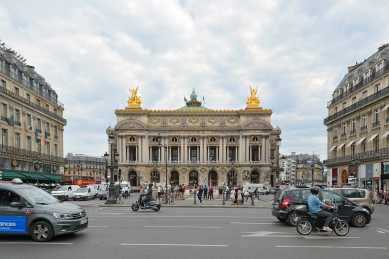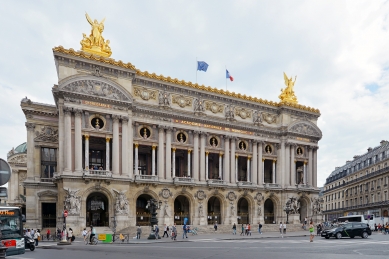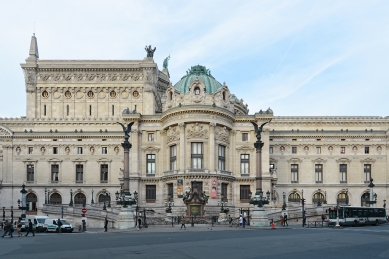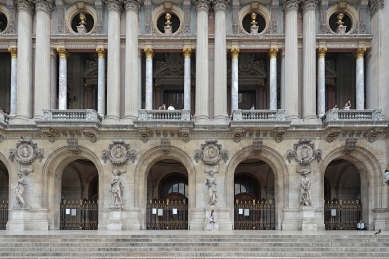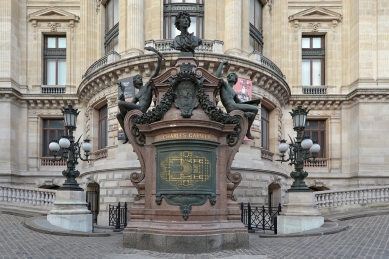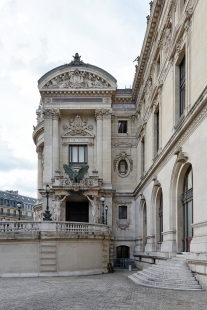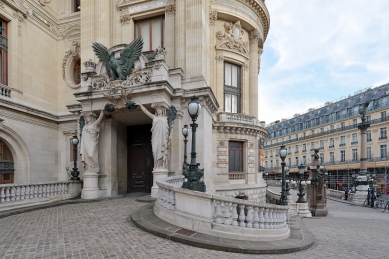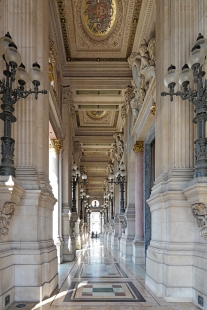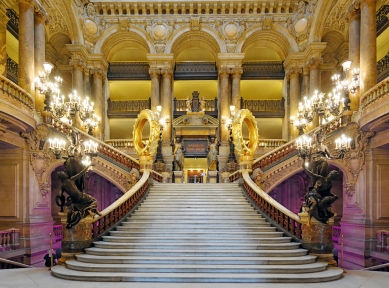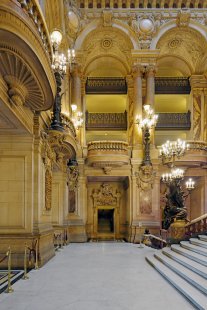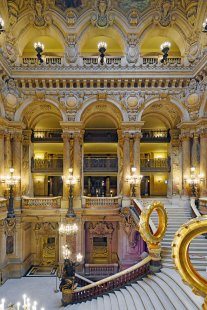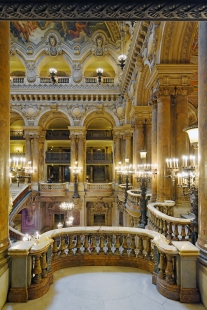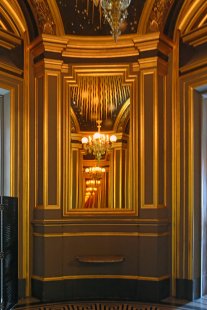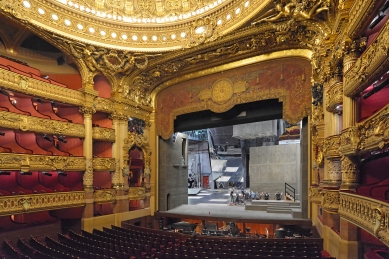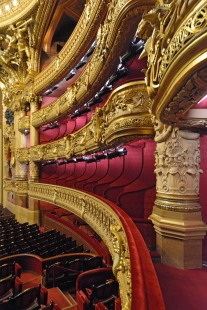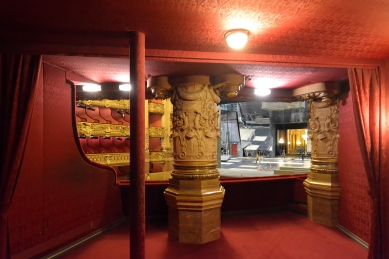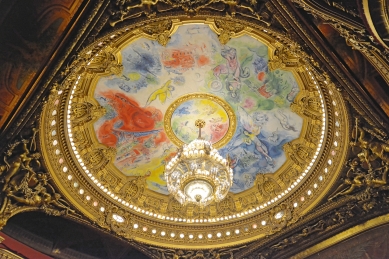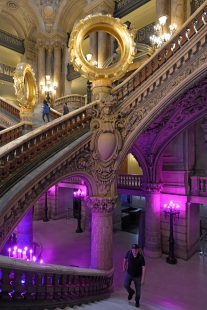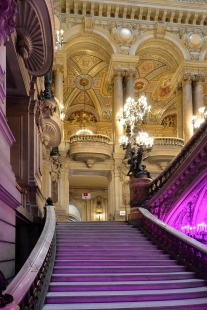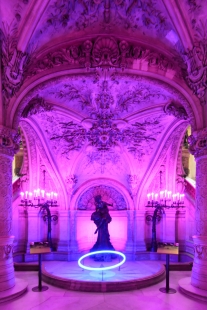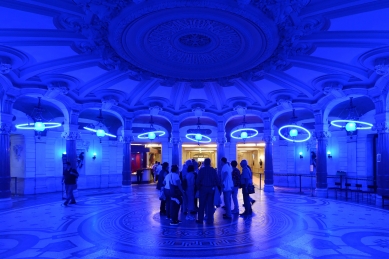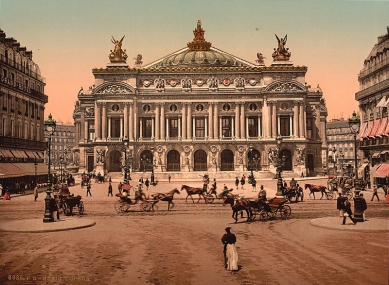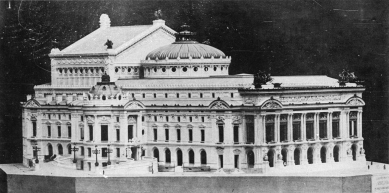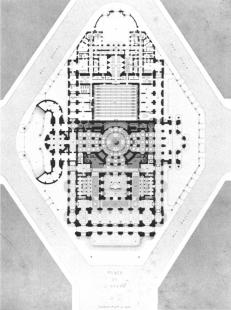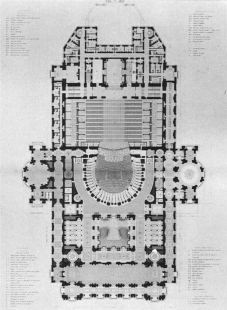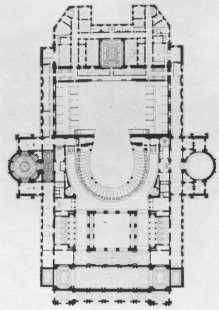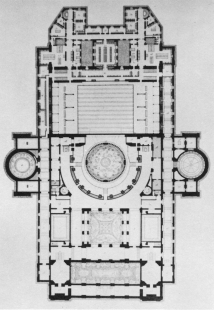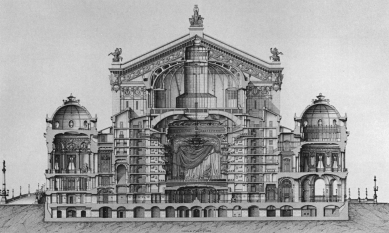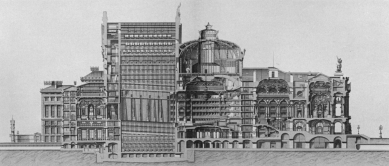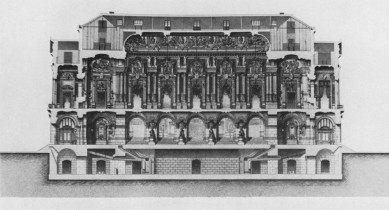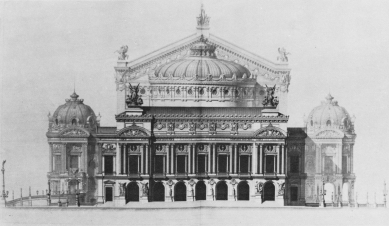
Paris Opera
Opéra National de Paris

Although described by a contemporary critic as 'looking like an overloaded sideboard', it (the Paris Opera House) is now regarded as one of the masterpieces of the period. Here Garnier triumphed over a cramped and difficult site, handling the carriage-ramps and approach steps, the foyers and staircases, both in section and plan, with confidence and skill. The style is monumental, classically based and opulently expressed, as the times demanded, in an elaborate language of multicoloured marbles and lavish statuary. Throughout his life, Garnier was criticized for his excessive use of ornament, as Napoleon and Haussman are still accused of being inspired by an out-of-date and imperialist showmanship expressed in a language already debased. Such critics forget that every city needs its occasional monuments and occasions of grandeur, and that thanks largely to these three men, Paris remains one of the most beautiful cities in the world.
John Julius Norwich, Great Architecture of the World, Cambridge: Da Capo Press 2001, p.214
2 comments
add comment
Subject
Author
Date
Skvělé!
Michaela
24.06.22 11:44
Garnier
LUDVIKA KANICKÁ
30.06.22 08:32
show all comments


